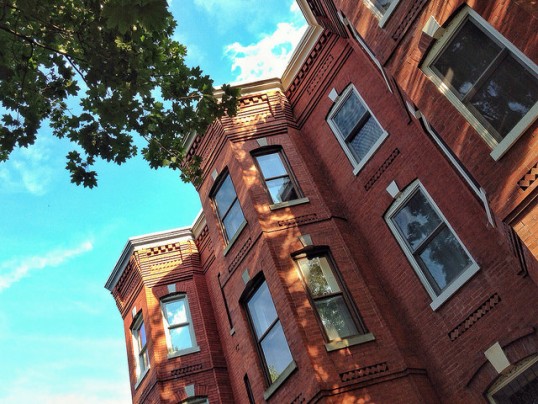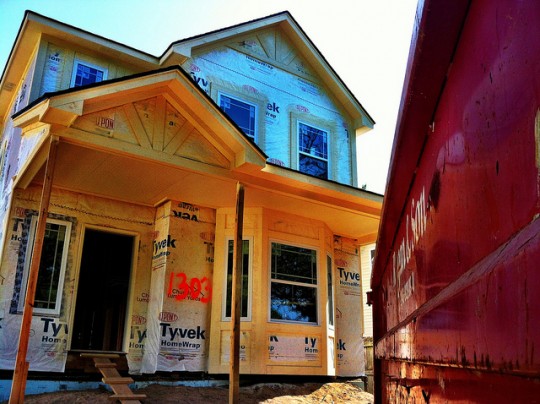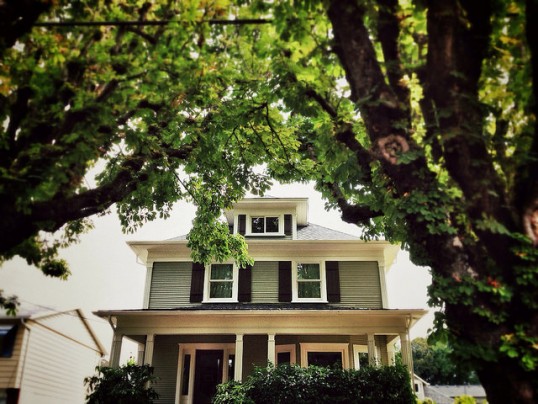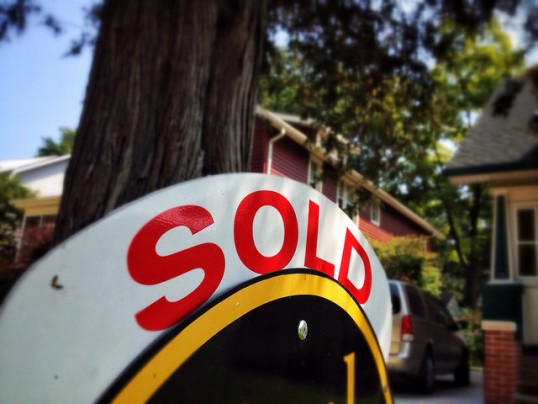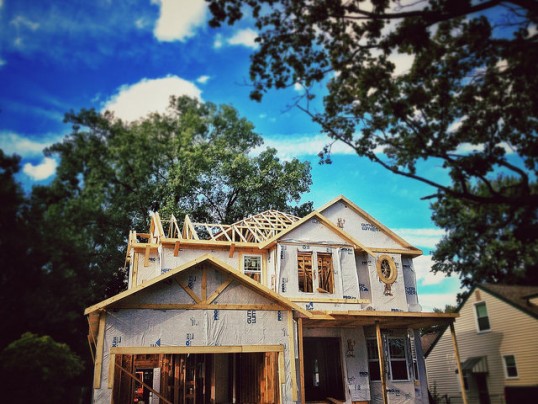In August, pending home sales slipped slightly, falling 1 percent from the month before, according to the National Association of Realtors’ Pending Home Sales Index. But despite the decline, pending sales – which reflect contract signings, not closings – were still at their second-highest level in a year and remain above average for the fourth month in a row. Lawrence Yun, NAR’s chief economist, said the decline was likely due to slowing investor activity and fewer distressed sales. “With investors pulling back, the market is shifting more towards traditional and first-time buyers who rely on mortgages to purchase a home,” Yun said. In fact, over the past two years, first-time home buyers have represented less than a third of monthly home purchases. But Yun believes first-time buyer participation should gradually improve, as the job market continues to rebound and incomes begin to rise. Regionally, pending home sales were down in the Midwest, South, and Northeast. In the West, they rose for the fourth-straight month. More here.
Archive for September 2014
Housing Market 5% Stronger Than Last Year
The housing market has had an up-and-down year. But, according to Freddie Mac’s most recent Multi-Indicator Market Index, it’s been more up than down. In fact, the index – which looks at purchase applications, payment-to-income ratios, the local job market, and the proportion of on-time mortgage payments to determine the strength of local markets across the country – found the national housing market up 5.39 percent on a year-over-year basis. Frank Nothaft, Freddie Mac’s chief economist, said the good news is that overall the housing market continues to improve but he expects housing to continue taking two steps forward and one step back. According to Nothaft, this pattern should continue until the broader economy sees better growth, labor markets tighten, and household formations pick-up and bring more first-time and move-up buyers into the market. Some of the most improved states over the past year include Nevada, Illinois, Florida, California, and South Carolina. More here.
New Home Sales Surge Biggest Since 1992
New-home sales surged in August, according to new estimates released by the U.S. Census Bureau and the Department of Housing and Urban Development. Sales increased 18 percent from one month earlier and are now 33 percent above last year’s estimate. The sales spike was the largest one-month improvement since 1992 and brought sales to their highest level since May 2008. Increased demand for new homes would mean a needed pickup in new residential construction – which has been slower than normal ever since the financial crisis and recession – but it would also boost economic growth and lead to further improvement in the job market. Also in the report, the median sales price of new homes sold in August was $275,600; the average price was $347,900. At the end of the month, there were 203,000 new homes available for sale. That represents a 4.8-month supply at the current sales rate. A 6-month supply is considered healthy for the market. More here.
Average Mortgage Rates Move Higher
According to the Mortgage Bankers Association’s Weekly Applications Survey, average mortgage rates moved higher last week from the week before. Increases were seen across all loan categories, including 30-year fixed-rate loans with jumbo and conforming loan balances, those backed by the Federal Housing Administration, and 15-year fixed-rate loans. Not surprisingly, rising mortgage rates caused a drop in refinance activity. In fact, refinance application demand fell 7 percent last week, following a 10 percent spike the week before. The drop caused the Market Composite Index – which measures both purchase and refinance application volume – to fall 4.1 percent. Still, purchase applications were relatively unchanged from the week before, decreasing just 0.3 percent. Though flat from one week earlier, purchase demand has now been more up than down over the past three weeks. The MBA’s weekly survey has been conducted since 1990 and covers 75 percent of all retail residential mortgage applications. More here.
Homeownership A Goal For Most Americans
The vast majority of Americans feel that buying a home is an important part of achieving the American Dream, according to a recent survey conducted by Country Financial. Nearly 90 percent of respondents viewed homeownership as a goal and – an increasing number of them – believe it is attainable for a typical middle-class family. In fact, the number of participants who said they believe owning a home is an achievable goal rose to 64 percent, according to the most recent survey. In 2013, just 41 percent of respondents said owning a home was attainable. Continued economic gains and improvement in the job market may explain the surging number of Americans that feel buying a home is within their grasp. But, among those who didn’t feel they could afford to buy a house, financial limitations, a low credit score, lack of a down payment, and the price of homes in their area were the biggest obstacles preventing them from buying. Current homeowners also said they felt their home was an important asset when considering retirement and 56 percent said they consider their home a long-term investment that will help them achieve their retirement goals. More here.
Home Sales Hit 2nd Fastest Pace This Year
Sales of existing homes reached their second-highest pace this year – despite slipping1.8 percent from the month before, according to new numbers from the National Association of Realtors. Before falling in August, sales of previously owned homes had risen in each of the previous four months. Lawrence Yun, NAR’s chief economist, said sales activity remains stronger than earlier in the year. “On the positive side, first-time buyers have a better chance of purchasing a home now that bidding wars are receding and supply constraints have significantly eased in many parts of the country,” Yun said. In fact, total housing inventory, though down in August, remains 4.5 percent higher than one year ago. And, though the share of first-time home buyers was unchanged in August, total homes sales actually increased in the Northeast and Midwest. However, decreasing sales in the South and West negated those gains. Also in the report, the median existing-home price for all housing types was $219,800, which is 4.8 percent higher than last August. More here.
New Home Construction Trending Higher
Housing starts measure the number of new homes that began construction in any given month. The data, collected by the U.S. Department of Housing and Urban Development and the U.S. Census Bureau, is compiled monthly, along with the number of building permits that were authorized during the month. In August, housing starts fell 14.4 percent. The numbers, at a glance, seem to indicate a setback for the new home market. However, the drop was largely fueled by a decline in the number of apartment buildings and condominiums that began construction, rather than single-family homes. Single-family housing starts, on the other hand, were just 2.4 percent below July’s upwardly revised estimate. And, total housing starts, despite a significant drop, are still 8 percent above last year’s rate. This indicates that the market is trending in the right direction. In fact,single-family building permits – which are a good indicator of future new home construction – were relatively flat in August, falling just 0.8 percent. Overall, building permits for new housing units were up 5.3 percent over last year’s estimates. More here.

